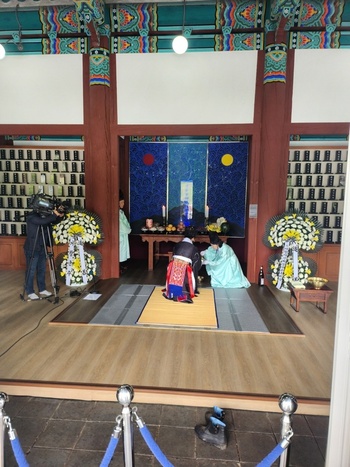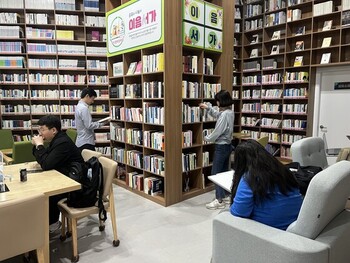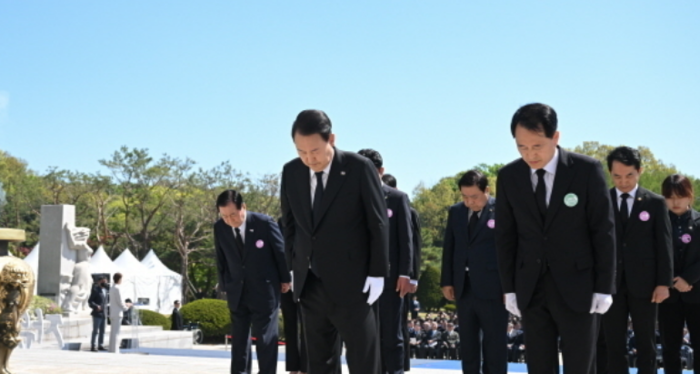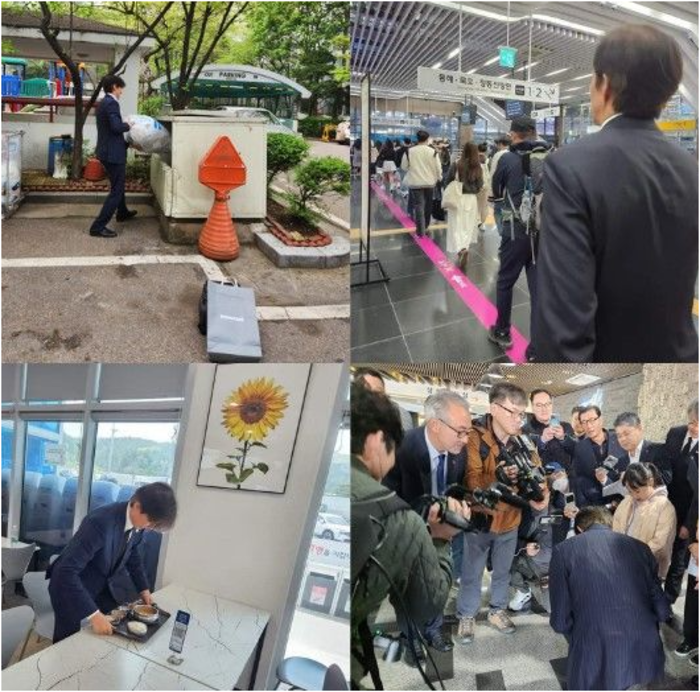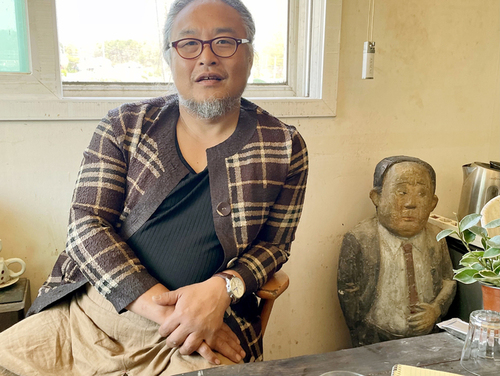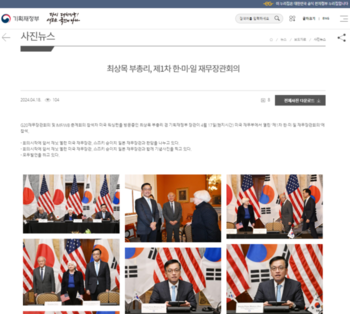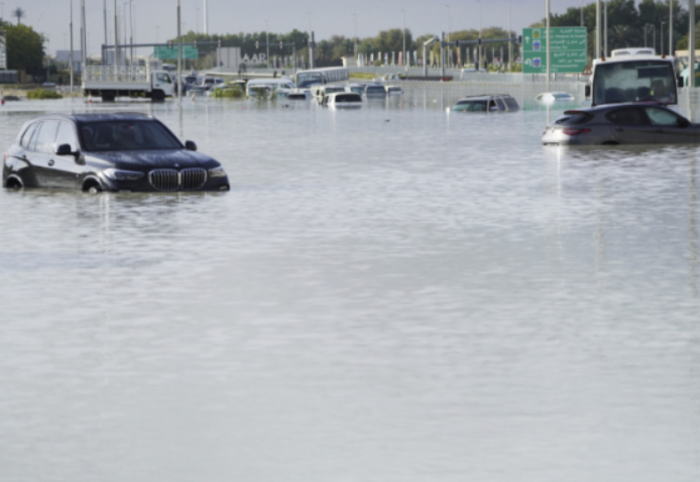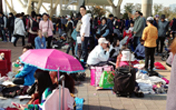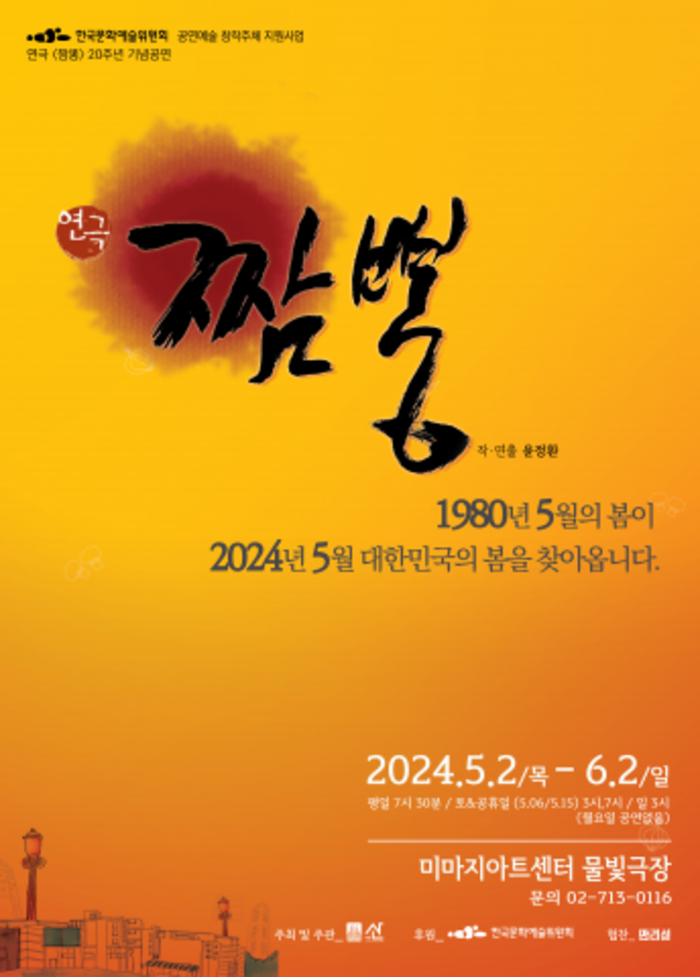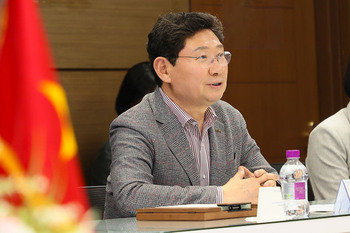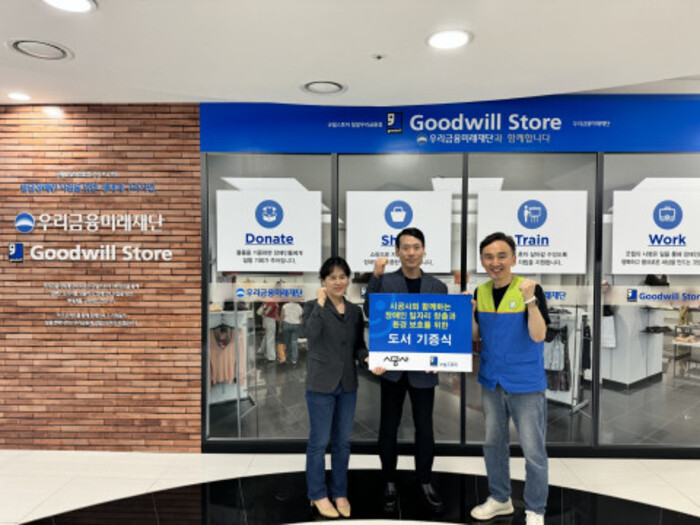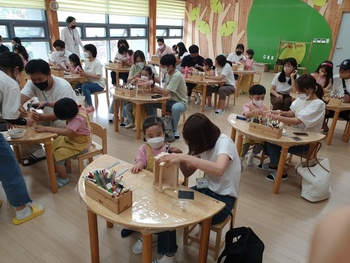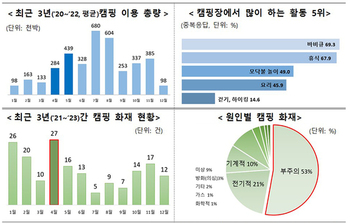박정희 주도 핵개발, 세계 반대에도 현재진행중
[외신] 후쿠시마 원전사고 후 타국가들 대응과 거꾸로가는 박 정부
박정희 주도 핵개발, 세계 반대에도 현재진행중[외신] 후쿠시마 원전사고 후 타국가들 대응과 거꾸로가는 박 정부[플러스코리아타임즈 = 김일미 기자] 에너지 빈국인 한국에게 핵에너지가 뜨거운 감자로 대두되고 있다. 박정희 정권때부터 지속된 핵에너지 문제는 그 딸이 집권하고 있는 2015년 현재까지 해결되지 않은 과제로 남아 있다.
정치전문지 디플로마트는 핵에너지 분야 전문가인 장세영씨의 기고문(? 또는 기사)을 통해 전 세계적으로 반핵운동이 확산됨에도 불구하고 에너지 빈국인 한국정부가 핵연료에 대한 의존도를 높이고자 하는 입장과 포스트 후쿠시마 시대를 맞는 다른 나라들의 탈핵연료를 위한 노력의 상반된 모습을 지난 8일 자 한국면에 다루며, 박근혜 정부의 제2차 국가에너지기본계획(2015~2035)이 한국 국민들에게 원자력에너지에 대한 의존도를 더 높이게 한다는 가정을 바탕으로 수립되었다고 보도 했다. 기사는 한국의 전기세 산정의 모순, 원자력에너지 관리시스템의 문제, 원자력 발전소의 막대한 손실, 직원비리, 핵폐기물 재처리 시설에 대한 국민들의 반대여론 및 핵폐기물 처리 기준 미비 등 한국정부가 보여주는 핵에너지 관련 문제점들을 전문가 의견, 한국내 기사 분석과 여론조사결과 인용 등을 통해 심도깊게 보도하고 있다. 기사는 국제정치학적인 면에서 한국이 왜 핵에너지를 통한 핵개발을 멈출수 없는지를 박정희 정권때와 박근혜 정부의 상황을 들어 설명하고 있다. 마지막으로 기사는 한국 정부는 국민과 지속적인 의사소통을 해야 하며 장기적 에너지 정책을 개발하는 데 더 투명해야 하고, 핵에너지를 성공적으로 운영할수 있는 대안을 제시해야 한다고 지적하고 있다. 다음은 뉴스프로가 번역한 디플로마트의 기사 전문이다. 번역 감수는 Terry. 기사 바로가기 ☞ http://bit.ly/1jQpb6w The Repercussions of South Korea’s Pro-Nuclear Energy Policy 한국의 친 핵에너지 정책에 대한 반발 A long-term policy is running into increasing domestic opposition. 장기적인 핵에너지 정책이 국내의 반대에 부딪히고 있다 By Se Young Jang October 08, 2015   Korea Wolsong Nuclear Power Plant, Image Credit: IAEA Image Bank 한국 월성 핵 발전소 South Korea has been trying to develop its nuclear energy industry over half a century. Insufficient energy sources, increasing domestic energy consumption, and rising oil prices in the 1970s were significant drivers that turned South Korea into a nuclear energy producer. Today, the country runs 24 nuclear reactors in four nuclear power plant sites, the second highest number of reactors among Asian countries after Japan and fifth highest in the world. Despite the contribution of nuclear energy to the South Korean economy, however, the country is currently facing mounting domestic concerns over its pro-nuclear energy policy. 한국은 반세기 이상 자체 핵에너지 산업을 개발하려 노력해왔다. 부족한 에너지 자원, 증가하는 국내 에너지 소비, 그리고 1970년대의 석유 가격 상승은 한국을 핵에너지 생산국으로 변모케 하는 주요 요인이었다. 오늘날, 한국은 4개의 핵발전소에서 24기의 원자로를 가동시키고 있고, 그 원자로 수가 아시아에서 일본 다음으로 많고 세계에서는 5번째이다. 그러나, 한국경제에 원자력의 기여에도 불구하고, 한국의 친 핵에너지 정책에 대해서 현재 한국 내에서 우려가 커지고 있다. In a local referendum held in October 2014, an overwhelming majority of the residents in Samcheok, a small coastal city in Gangwon province, rejected the South Korean government’s plan to build a nuclear power plant in the city. Since Japan’s 2011 nuclear disaster in Fukushima and South Korea’s 2013 scandals over fake safety certificates for nuclear equipment, South Koreans have begun to take nuclear safety issues more seriously, which in turn has prompted a growing anti-nuclear power sentiment. A series of scandals and accidents in South Korea’s nuclear power plants have focused public attention on the effects of radioactive materials on the health of the residents who live near the country’s four nuclear power plants. Last year, a South Korean court ruled that the Korea Hydro & Nuclear Power Co., a state-run nuclear power plant operator, was responsible for the thyroid cancer suffered by a plaintiff, who has lived 7.7 km away from the Kori nuclear power plant over the past 20 years. Since then, more than 500 thyroid cancer patients living close to the nuclear power plants in South Korea have been preparing a joint legal action against the company. 강원도의 조그만 해안 도시 삼척에서 2014년 10월 시행된 주민투표에서, 압도적인 다수의 주민이 그 지역에 원자력 발전소를 건설하려는 한국 정부의 계획을 거부했다. 일본의 2011년 후쿠시마 원자력 참사와 한국의 2013년 원자로 불량 부품 서류 조작사건 이후, 한국인들은 핵에너지 안전 이슈를 더 심각하게 받아들이기 시작했고, 이는 결국 점점 반핵 감정을 유발시켰다. 한국 원자력 발전소에서 일어난 일련의 사건 사고로 인해 한국의 4개 원자력 발전소 인근에 사는 주민들의 건강에 미치는 방사성 물질의 영향에 대해 대중의 관심이 집중되었다. 작년, 한 한국 법원이, 고리 원자력 발전소에서 7.7km 떨어진 곳에 지난 20년간 살아온 한 고소인의 갑상샘암에 국영 원자력 발전소 운영자인 한국전력이 책임이 있다고 판결했다. 그 이후 한국 원자력 발전소 가까이 사는 500명 이상의 갑상샘암 환자들이 한전을 상대로 집단소송을 준비해오고 있다. Notwithstanding the anti-nuclear sentiment, nuclear energy as a share of total electricity generated increased to about 30 percent in 2014, and the South Korean government is currently constructing four new nuclear reactors with eight more being planned. Standing firm on its nuclear power plant projects, the South Korean government regarded the Samcheok referendum as not legally binding, and this position remains unchanged. Under the Second Basic National Energy Plan for 2015-2035, South Korea appears to have few options but to stick to its original plan of building more nuclear power plants, as the 2015-2035 energy plan was based on the assumption that it could not avoid raising its dependence on nuclear power. 반핵 감정에도 불구하고, 생산된 총 전력 가운데 원자력에 의해 생산된 전력량은 2014년 약 30% 증가했고, 한국 정부는 현재 4기의 새로운 원자로를 건설 중인 가운데 8기를 추가 건설할 계획이다. 한국 정부는 원자력 발전소 건설 계획에 대해 확고한 상태로, 삼척에서 실시한 주민투표가 법적 구속력이 없다고 간주했으며, 이에 대한 입장을 고수하고 있다. 2015-2035년에 걸친 제2차 국가에너지기본계획을 보면, 한국 정부는 원자력 발전소를 더 늘린다는 기존의 계획을 추진하는 것 외에는 별로 다른 방법이 없어 보이는 데, 이는 2015-2035년 에너지계획이 원자력에 대한 의존이 높아지는 것을 피할 수 없다는 가정을 바탕으로 수립됐기 때문이다. Critics say that the government overestimated future electricity demand and underpriced electricity. According to the Sixth Basic Supply-Demand Plan for Electricity (2013-2027), South Korea will use more electricity per capita than the United States in 2024. The high population density in South Korea could translate into lower demand for electricity per capita. Moreover, estimates of electricity demand are based on cheap prices for electricity; the government calculated that the rate of increase in electricity prices in the coming years would be one third of the inflation rate. Some newspapers in South Korea report concerns about rising electricity bills as a result of a decreasing reliance on nuclear power. Still, it is interesting to note that 65.6 percent of respondents in a 2013 poll were willing to pay a higher electricity bill if it meant fewer nuclear power plants. 비평가들은 정부가 미래의 전력 수요를 과대평가하고 전기세를 너무 싸게 책정했다고 말한다. 제6차 전력수급 기본계획(2013-2027)에 따르면, 2024년에 한국은 일 인당 전력 사용량이 미국보다 많아질 것이라고 한다. 한국의 높은 인구밀도는 일 인당 전력 수요를 낮출 수 있을 것이다. 게다가, 전력 수요는 값싼 전기세를 바탕으로 책정됐다. 즉, 정부는 향후 몇 년간 전기세의 인상률을 물가상승률의 3분의 1이 되도록 계산했다. 한국의 일부 신문들은 전기세 인상에 대한 우려를 원자력에 덜 의존하려는 데서 오는 결과라고 보도한다. 그러나 여전히, 2013년의 한 설문조사에서 65.6%의 응답자가 원자력 발전소를 줄일 수만 있다면 높은 전기세를 낼 생각이 있다고 한 것은 지적할 만한 흥미로운 사실이다. The Seventh Basic Supply-Demand Plan for Electricity (2015-2029) released by the Ministry of Trade and Industry in July 2015 does not reflect the growing public concerns about nuclear energy. Arguing that nuclear energy is a necessary source for reducing greenhouse gases and contributing to the global response to climate change, the South Korean government adheres to its original plan to continuously rely on nuclear energy. South Korea’s current pro-nuclear energy policy contrasts sharply with Germany’s decision in the post-Fukushima era. Germany shut down eight nuclear reactors in 2011, announced plans to close all reactors by 2022, and increased the role of renewable energy sources. 2015년 7월, 통상산업부가 발표한 제7차 전력수급 기본계획(2015-2029)은 원자력에 대한 커지는 국민의 우려를 반영하지 않고 있다. 한국 정부는, 원자력은 온실가스를 줄이고 기후 변화에 대한 전 세계의 대응에 이바지하기 위해서 꼭 필요한 자원이라고 주장하며, 핵에너지에 계속해서 의존하려는 기존의 계획을 고수하고 있다. 한국의 현 친-핵에너지 정책은 후쿠시마 참사 이후 독일의 결정과는 정면으로 대조된다. 독일은 2011년에 8기의 원자로를 폐쇄했으며, 2011년까지 모든 원자로를 폐쇄할 계획을 발표하였고, 재생에너지 자원의 역할을 증가시켰다. Why can’t – or won’t – South Korea follow Germany’s example? Apart from its insufficient domestic energy sources, leading to a heavy dependence on imported sources, South Korea appears to be unable to simply abandon a 50-year nuclear policy. The government’s efforts to develop nuclear energy industry began in the late 1960s and early 1970s, when then President Park Chung-hee, father of incumbent President Park Geun-hye, was promoting export-oriented heavy and chemical industry. As part of his “self-reliance” strategy, Park sought to make South Korea less dependent on external powers, particularly the United States, both economically and militarily. Along with his efforts to develop nuclear weapons in the 1970s, he believed that investing in nuclear energy would be important and rewarding for the future of South Korea, because of nuclear technology’s dual-use characteristics. Today, South Korea no longer seeks its own nuclear weapons, but Park Geun-hye still sees boosting nuclear energy industry as a great opportunity for the South Korean economy. Now a nuclear exporter, South Korea has concluded agreements with Jordan and the United Arab Emirates to construct one research reactor and four commercial reactors. Notably, Park herself demonstrated her willingness to promote the nuclear energy industry by visiting the UAE last year to attend the completion ceremony of the Korea-built Barakah-1 reactor, at a time when South Korea was grieving over the sinking of Sewol ferry. 왜 한국은 독일의 예를 따를 수 없는 것인가, 아니면 따르려 하지 않는 것인가? 수입원자재에 대한 높은 의존도로 이어지는 한국의 부족한 국내 에너지 자원은 별문제로 하고도, 한국은 50년 핵에너지 정책을 간단히 포기할 수 없는 것으로 보인다. 핵에너지 산업을 개발하기 위한 한국의 노력은 1960년대 말과 1970년대 초에 시작되었다. 현 박근혜 대통령의 부친인 당시 박정희 대통령은 수출 지향적인 중화학 산업을 촉진하고 있었다. “자립” 정책의 일환으로 박정희는 한국을 경제적, 군사적으로 특히 미국과 같은 외부 세력에 덜 의존하게 만들고자 하였다. 그는 1970년대에 핵무기를 개발하려 노력하는 한편, 핵 기술의 이중용도 특징 때문에, 핵에너지에 투자하는 것이 한국의 미래에 중요하고 보답해주리라 믿었다. 현재, 한국은 자체적인 핵무기를 더 이상 추구하지 않는다. 그러나 박근혜는 여전히 핵에너지 산업을 신장시키는 것을 한국경제를 위한 큰 기회라고 여기고 있다. 현재 핵에너지 수출국인 한국은 요르단과 아랍에미리트에 연구용 원자로 1기와 상업용 원자로 4기를 건설하기로 합의 했다. 특히, 작년 한국이 세월호 침몰로 슬픔에 젖어 비통해하고 있을 당시, 박근혜는 한국이 건설한 바라카-1호 완공 기념식에 참석하기 위해 아랍에미리트를 방문해서 핵에너지 산업을 촉진하겠다는 의지를 몸소 증명해 보였다. The geopolitics of Northeast Asia further complicates South Korea’s position and seemingly prevents it from reversing its pro-nuclear direction. China is a nuclear weapons state possessing around 250 nuclear warheads while North Korea is a de-facto nuclear state after a series of nuclear tests conducted in 2006, 2009, and 2013. In the case of Japan, the Fukushima disaster did not entirely halt the Japanese government’s strong nuclear power aspirations. Notwithstanding widespread anti-nuclear protests, the Japanese government has recently restarted the Sendai-1 reactor, after shutting down all of its 44 operable reactors in the wake of Fukushima. Some also believe that Japan has the capability to develop its own nuclear weapons because of its highly advanced nuclear technology, including nuclear fuel reprocessing. Surrounded by these three military and civil nuclear powers, South Korea appears to find it difficult to abandon the path it has pursued over the last half century, even though Korea’s nuclear aspirations currently remains in the civilian realm. 동북아시아에서 한국의 지정학적 위치는 복잡해지고 있으며 표면적으로는 친핵화 되어가는 것을 막아주고 있다. 북한이 2006년 2009년 그리고 2013년에 핵무기 실험 후 실질적인 핵보유국 상태에서 중국은 250개의 핵무기 탄두를 소유하고 있다. 일본의 경우, 일본 정부의 강한 핵무기 염원을 후쿠시마 재앙이 전적으로 막지는 못했다. 전국적인 반핵 시위에도 불구하고 일본 정부는 후쿠시마 사고 이후 44개의 원자로 봉쇄 후에 최근에 센다이 1 원자로를 재가동했다. 일부는 또한 일본이 핵연료 재처리를 포함한 첨단 핵기술을 가지고 있어서 핵무기를 만들 능력이 있다고 믿고 있다. 이 세 나라의 군사용 핵과, 에너지 핵으로 둘러싸인 한국은, 비록 지금 핵에너지 영역에서만 열망이 남아 있지만, 지난 반세기 동안 핵에 관해 추구한 길을 포기하기에 어려워 보인다. Series of Hurdles 어려움의 연속 Korea’s success in the nuclear export market and geopolitical necessities notwithstanding, the current domestic situation is hardly favorable to the South Korean government. The 2013 scandal over hundreds of faulty components used in reactors is still unfolding. A parliamentary audit last year revealed that the temporary suspension of the operations of nuclear power plants after the scandal caused the loss of 10 trillion won (about $9.5 billion), and that some officials fired from the KEPCO E&C (Korea Electric Power Corporation Engineering and Construction) over the scandals were rehired. Worse, the result of the referendum in Samcheok is probably only the beginning of a series of hurdles which the South Korean government will have to overcome. More than half of the respondents in a recent poll conducted in Yeongdeok, in North Gyeongsang Province, which was also designated as a nuclear power plant site by the government in 2012 along with Samcheok, opposed the central government’s construction plan. 한국의 핵 수출 시장과 지정학적 수요에 따른 성공에도 불구하고, 현재 한국 내 사정은 정부에 거의 우호적이지 않다. 2013년 원자로에 사용된 수백 개의 불량 부품 스캔들이 여전히 전개되고 있다. 지난해 의회 감사에 따르면, 이 스캔들로 일시적으로 중단된 원자력 발전소가 10조 원의 손실을 냈고, 일련의 스캔들 이후 해고된 한전 직원이 2013년 재고용된 것으로 나타났다. 더 나쁜 것은, 삼척에서 시행했던 국민투표 결과는 아마도 한국 정부가 극복해야 할 일련의 어려움의 시작점일 뿐이라는 것이다. 최근 2012년 삼척과 함께 핵발전소로 지정된 경상북도 영덕에서 시행된 설문조사에서 응답자 반 이상이 정부의 핵발전소 계획에 반대하고 있다. The consent of local residents will be even more important in the near future as South Korea faces a crisis over the storage of nuclear spent fuel. South Korea has nearly 9,000 tons of spent fuel stacked in temporary storage pools with about 750 tons added to the pools every year. They could reach maximum capacity by 2021. The government has been deliberating over several ways of storing spent fuel, including pyroprocessing and a medium-term solution using dry casks; but no matter what method South Korea chooses, the government will need to be able to persuade people living next to the facility, no easy task as Samcheok has demonstrated. 한국이 사용후핵연료 저장소 관리 위기를 맞아 앞으로 지역주민과의 합의가 이전보다 훨씬 더 중요해졌다. 한국은 이미 9천 톤가량의 사용후핵연료가 임시 저장소에 쌓여 있는데, 대략 750톤이 해마다 추가된다. 2021년도에 이르면 최고 용량에 도달할 수도 있다는 예측이 나오고 있다. 정부는 폐핵연료 재생 처리 계획과 건조한 통을 사용하는 중장기대책을 포함하여, 사용후핵연료를 저장하는 여러 방식을 궁리해 왔으나, 어떤 방법을 택하던 정부는 저장소 시설 인근에 거주하는 시민들을 설득할 수 있어야 할 것이다. 앞서 삼척에서 겪어본 것처럼 쉬운 일만은 아닐 것이다. Clearly, given its heavy dependence on energy imports, reducing its reliance on nuclear energy will be tough decision for South Korea. However, social costs and safety risks should not be underestimated in the policymaking process. In the absence of guaranteed safety, policy packages to boost the economy of a candidate city are proving insufficient to win over local residents to a nuclear power plant project in the post-Fukushima era. At the same time, the South Korean government needs to be able to communicate with its people and be more transparent in developing a long-term energy policy. South Korea stands at the crossroads and must decide whether its current nuclear energy policy should proceed as planned. If it decides to stick to its original plan, the government will have to persuade both the general public and the residents of candidate cities with arguments they can accept. 특히 에너지 수입에 상당히 의존하고 있는 것을 고려해 볼 때, 한국 입장에서는 원자력에 대한 의존을 축소한다는 건 어려운 결정이다. 하지만 정책 결정 과정에서 사회적 비용과 안전상의 위험 같은 요소를 절대 과소평가돼서는 안 된다. 포스트-후쿠시마 시대인 만큼, 후보 도시의 경제신장을 확신하는 정책제안 역시 안전이 보장되지 않는 한 지역주민을 쉽게 설득하지 못할 것이다. 동시에, 한국 정부는 국민과 지속적인 의사소통을 해야 하며 장기적 에너지 정책을 개발하는 데 더 투명해야 한다. 한국은 현재 교차로에 서 있고 현재의 원자력 방침을 그대로 시행시킬 것인지 아닌지를 결정해야 한다. 만약 기존의 계획을 고수하게 된다면, 정부는 일반 국민과 후보 도시의 주민들이 모두 받아들일 수 있는 논지를 가지고 그들을 설득해야 할 것이다. Se Young Jang is an associate of the Project on Managing the Atom at the Belfer Center for Science and International Affairs, Harvard Kennedy School, and a non-resident Kelly fellow at the Pacific Forum CSIS. 장세영씨는 벨퍼센터 과학 및 국제협력과, 하버드 케네디 학교에서 원자경영 프로젝트 준회원으로, 태평양 포럼이라고 부르는 CSIS에서 비거주 켈리 펠로우로 활동하고 있다. 원본 기사 보기:pluskorea <저작권자 ⓒ 인터넷저널 무단전재 및 재배포 금지>

댓글
핵에너지 정책 박정희 박근혜 관련기사목록
|
인기기사
|




